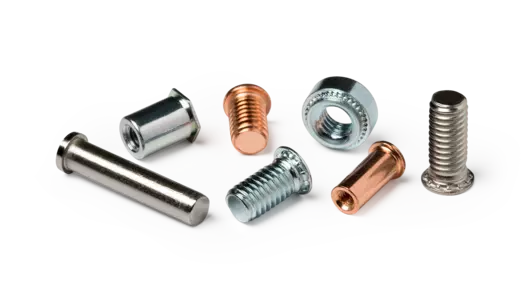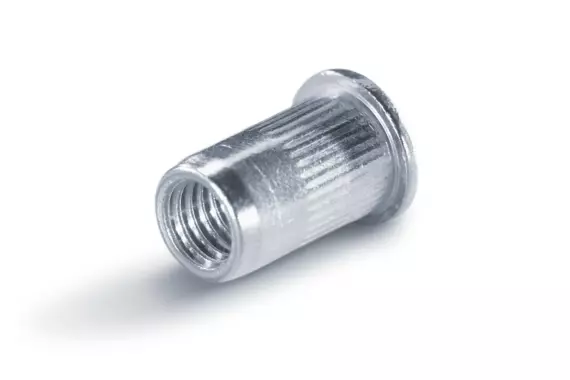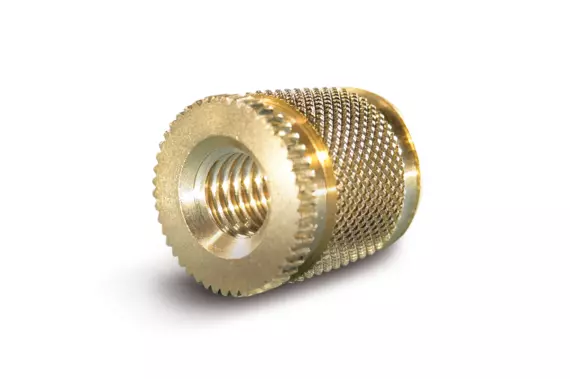Our self-clinching nut allows you to quickly and economically obtain a strong thread in thin sheet metals.
Available in zinc-plated steel and stainless steel.
Simple in installation.
The self-clinching nut is installed using a press.
Advantages
- High resistance to pull-out and tightening torque
- Strong thread
- Small body
- Only protrudes from the support surface
- The support surface does not damage


